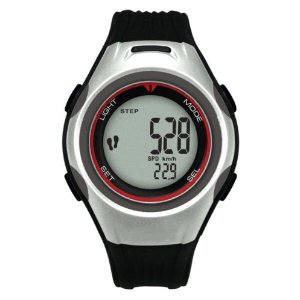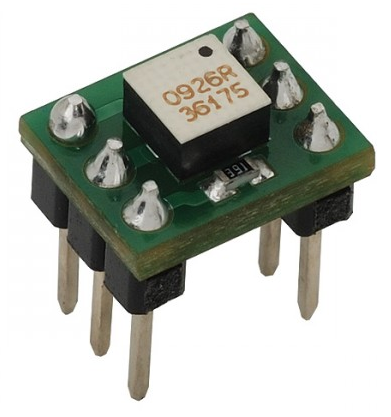Pedometers
by Andrew Boyd
Today, an investigation. The University of Houston�s College of Engineering presents this series about the machines that make our civilization run, and the people whose ingenuity created them.
A friend was trying to convince me that his latest gadget was so awesome I had to get one. He was talking about a wrist mounted pedometer — a device for counting steps. The thought of having a ready reminder of how much activity I was getting — or how little — had its appeal. Still, I was skeptical. Today's technology's impressive, but it can't work magic. I was aware of the engineering challenges involved, and suspected the appeal to consumers surpassed the underlying science

Example of a wristwatch with a built-in accelerometer
At the heart of pedometer technology is a device known as an accelerometer. Accelerometers measure forces like the pull of gravity or the change in velocity when a car's braking. Today's accelerometers are quite accurate and use very little power. They're also small. With all the bells and whistles attached, they're about the size of an eraser on a pencil.

What's amazing is the number of uses engineers have discovered for these tiny devices. Some are pretty straightforward. Accelerometers are used to deploy airbags during car accidents. They can spot trouble in complex mechanical systems by detecting abnormal vibrations, like a fan that's out of balance.
Other uses of accelerometers are quite ingenious. When an iPhone is rotated and the picture automatically reorients itself, that's the work of an accelerometer. It knows what direction is "up" since it senses the force of gravity.
Nintendo launched a new generation of electronic games by taking advantage of accelerometers. Players don't push a button to swing a baseball bat or tennis racquet on a Wii. They swing a controller which senses their movement and radios it to the game console.
So if we strap an accelerometer to our wrist, it can accurately measure our movements. But, and here's the big question, can computer software sort through all of our motions to determine what's a step and what isn't?
The answer, I discovered, is a qualified yes. Walking is a rhythmic activity, with distinctive, telltale signs. And the algorithms for finding these signs, even when buried in all our other day to day motions, are pretty good.
Good, but not perfect. I suggested to my friend that he might be able to trick his pedometer by rhythmically tapping his hand on a desk. Sure enough, after a few seconds the wrist counter was happily recording steps that really weren't steps. When I suggested typing, he experimented again. But this time, no luck. Typing wasn't rhythmic enough.
I enjoyed the opportunity to learn more about pedometers, and my friend's enthusiasm and willingness to experiment made it all that much more fun. It's clear that pedometers are accurate enough to serve their most important purpose, and that's not counting steps with great precision. It's making us aware of our daily physical activity. By that measure, pedometers are a resounding success.

I'm Andy Boyd, at the University of Houston, where we're interested in the way inventive minds work.
Notes and References:
Special thanks to Rick and Kiki Bennett for bringing the topic of pedometers to my attention — and for their willingness to experiment.
A Beginners Guide to Accelerometers. From the Website: http://www.dimensionengineering.com/accelerometers.htm. Accessed January 17, 2012.
The picture of the pedometer is from the Website of Amazon.com. The picture of the accelerometer is from the DIYbin Electronics and Robotics Simplified Web site. The picture of the woman walking is from the Healthy Opportunities Website of the Iowa Department of Administrative Services.
This episode was first aired on January 19, 2012.